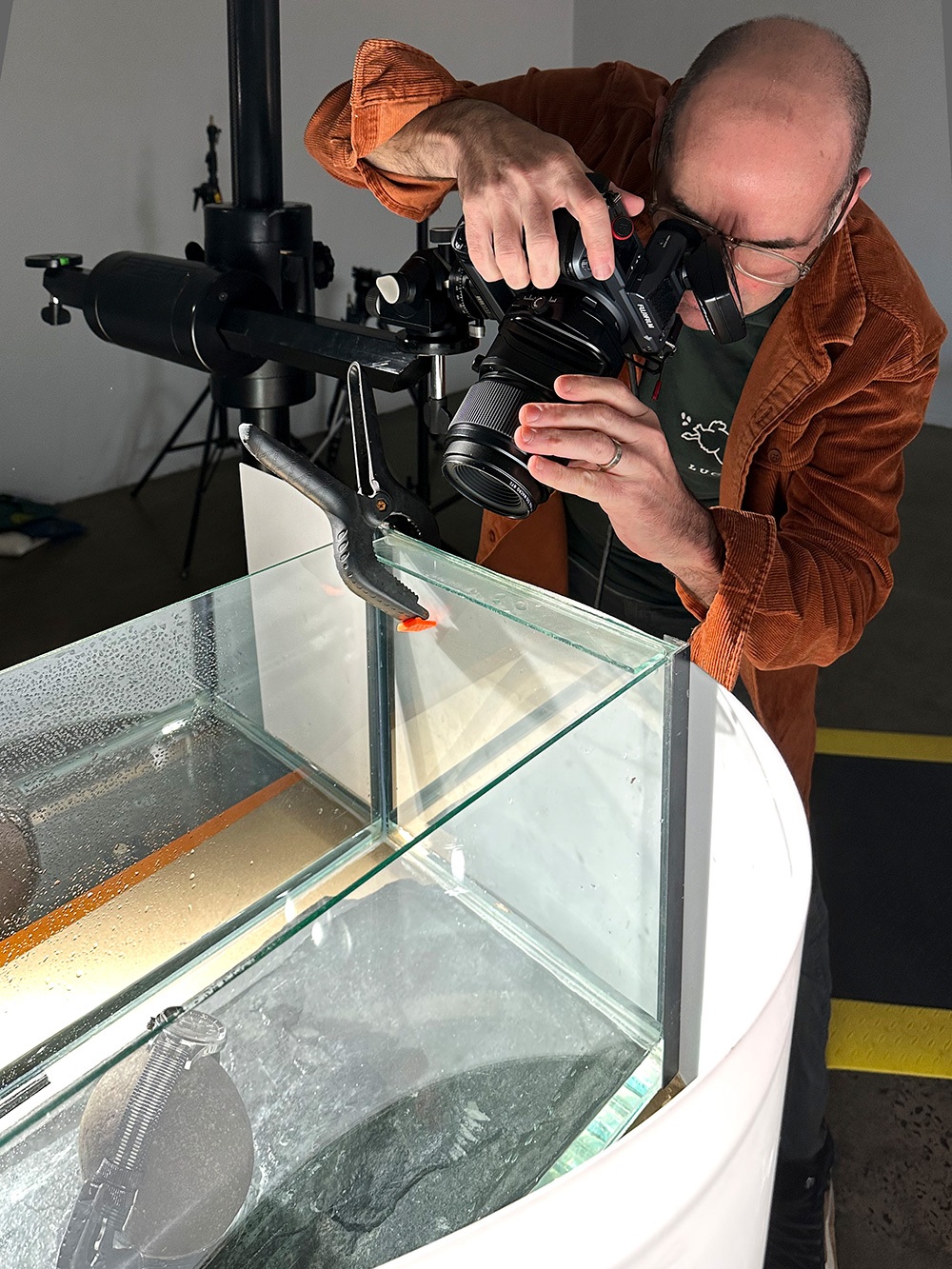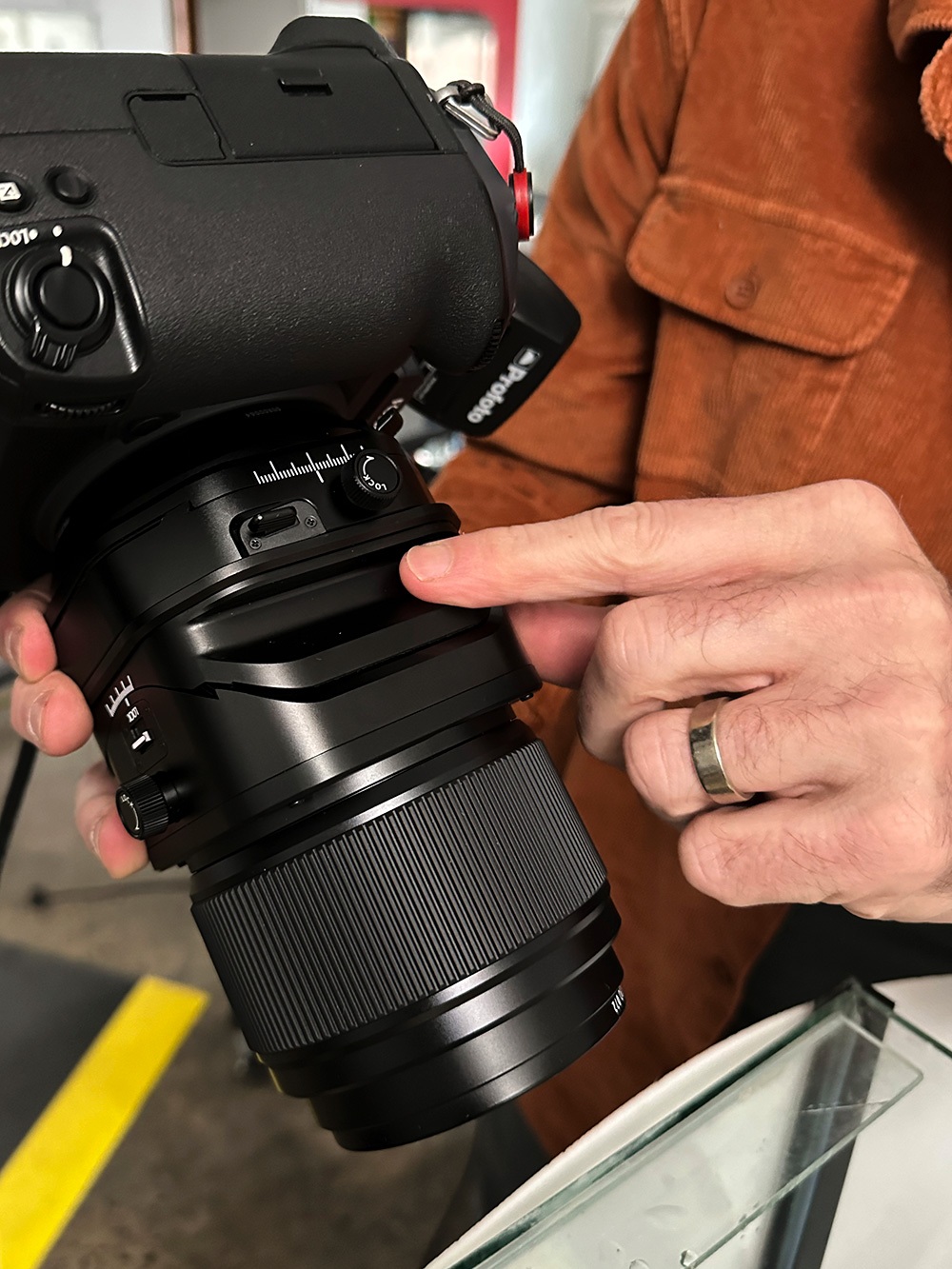A perfect addition to the GFX lens range!
Sneak peek! FujiFilm GF110mm Macro T/S
So you have been using the GF120mm Macro and probably doing focus stacking to try to get your still life images sharp from front to back!
Introducing the FujiFilm GF110mm f5.6 Macro Tilt Shift Lens. Ideal for product photography, creative portraits and whatever else you can put your creative juices into.
Sporting the well known and widely respected FUJINON optics, this is a lens that we are really excited about.
FujiFilm GF110mm f5.6 Macro T/S Tilt Shift lens highlights
This lens is amazing! Not only will it be a go to lens for architectural and landscape photographers, but we found it rather interesting for a still life studio image.
Here are some key highlights:
- Focal length equivalent to 87mm (35mm format)
- 85mm image circle for vignette free shifting
- Tilting of ±10° and shifting of up to ±15mm control the focal plane and perspective of the subject.
- Built-in sensor that detects the degree of shifting and revolving movements.
- 72mm front filter
- Minimum focus distance of 43cm
- Magnification of 0.5x
The lens consists of 11 lens elements in 9 groups including 1 aspherical elements, 2 ED elements. The aspherical element controls comatic aberration and field curvature while the ED elements minimise axial chromatic aberration. Furthermore, the lens configuration, with the aperture midway, suppresses distortion and lateral chromatic aberration to achieve edge-to-edge sharpness without relying on electronic correction.

The challenges solved by Tilt (swing) and Shift
Historically when creating an image where the main elements were not on the same focus plane, out came the trusty large format 4x5 (or 8x10) view camera (from Cambo, ARCA-SWISS, Sinar, Toyo and many others - including FujiFilm GX680), with a rail and bellows system that allowed for film planes and lens positions to be shifted and tilted. This allowed for perspective control and precise positioning of the subject in relation to it's environment.
Fast forward and there would be many photographers that may have never put hands on a large technical camera with movements. Their tools of trade may have become Tilt/Shift lenses on their 35mm camera of choice, or there may be some requiring more control when creating their images that may have jumped into attaching their 35mm or medium format digital back or camera on a compact view camera with rail and bellows, much like the Cambo ACTUS or ARCA-SWISS M-Line or F-Line.
The 110mm has ±15mm rise and fall, if you want to achieve shifting side to side, the lens has a switch to rotate the lens barrel 90°.
The same also goes for the ±10°Tilt, top to bottom. If you want to swing side to side, the lens is again rotated 90° to achieve swing left to right.
The problem with using a standard macro lens is that when you get nice and close to fill the frame with the subject, you generally get a very narrow depth of field. The only solution to get the subject sharp from front to back is to either:
- use a focus stacking technique that creates a large number of files and then deciding what focus stacking software is going to give you the best result
- move the camera back a long way to try and get more of the subect in focus meaning that the potential size of the image is compromised as you are not using the whole frame

The 110mm Macro Tilt Shift solves this dilemma by allowing the positioning of the lens elements to alter the normal lens position (being parallel to the sensor).
And by the way, this lens will create amazing possibilities when used with video as well.
While conducting our test, we captured sharp images of a watch, ensuring all components were in focus. However, we were compelled to explore the lens's capabilities beyond its intended use. Rather than settling for a mundane image where every element of the watch is sharp, we sought to unleash the lens's creative potential by adding some extra flair.
Thank-you Adrian Lander (still life [and other things] master) for helping us explore what this lens would not normally be used for!
To check out Adrian's amazing body of work, please visit https://www.adrianlander.com.au/ You can also follow him on Instagram
Pricing & availability
At launch (September 2023) the Australian price of the FujiFilm GF110mm f5.6 T/S lens is $5,899.
The lens will be available toward the end of September 2023.